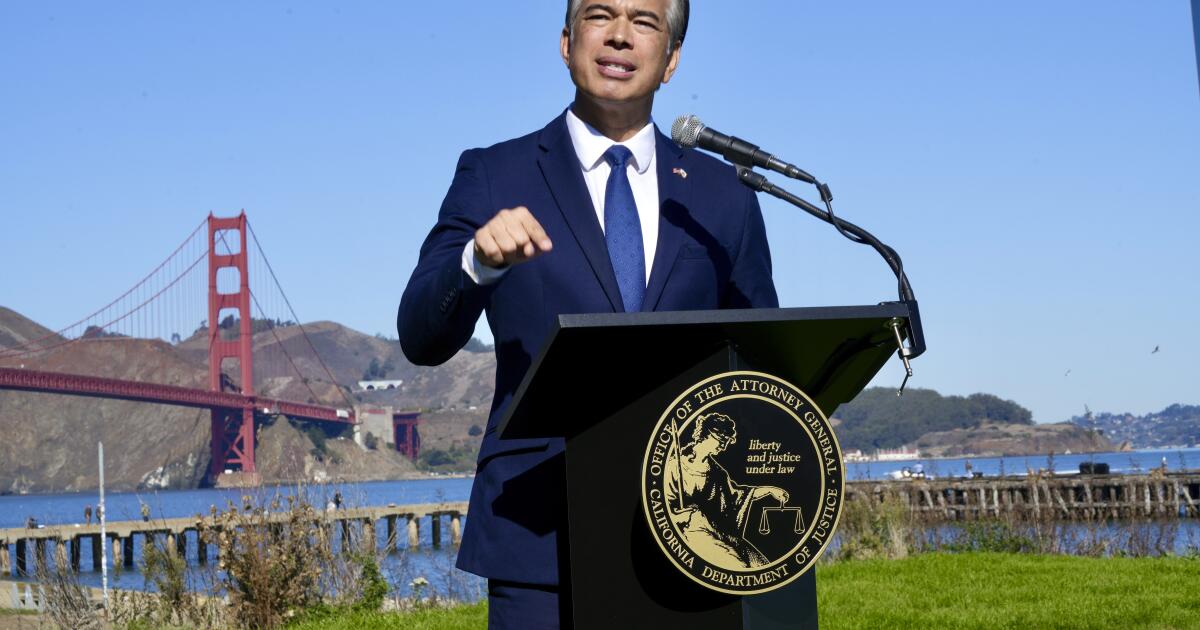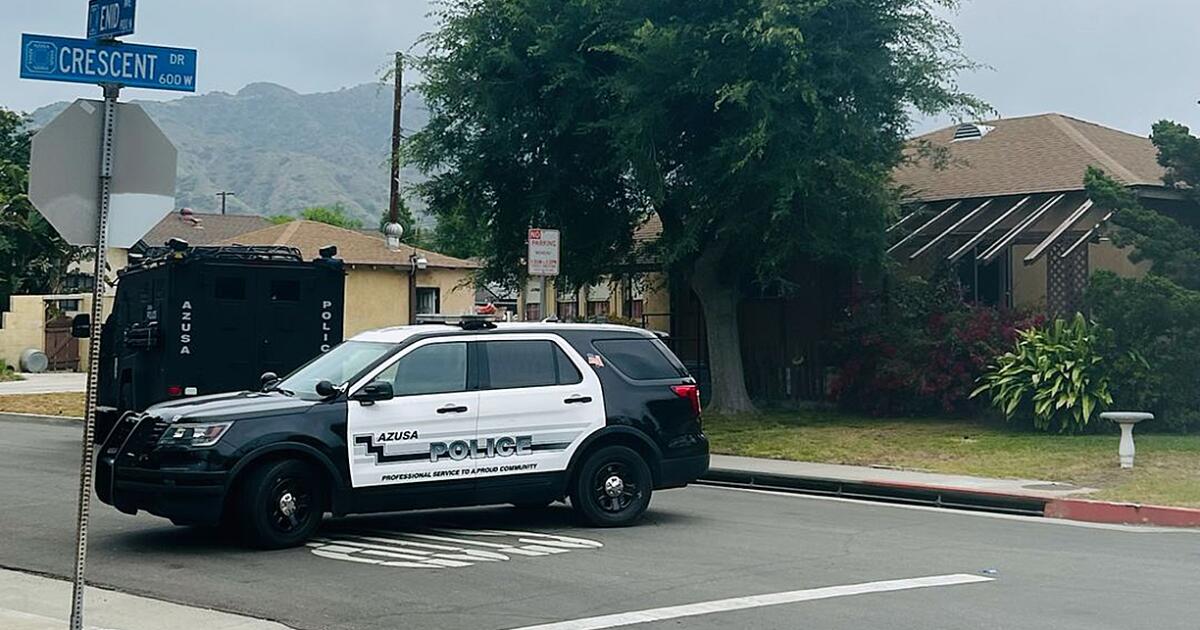In 2026 the governor of California hopes to campaign for Trump

SACRAMENTO – When he ran for governor in 2017, Gavin Newsom came under fire from California liberals, at one point boasting on the campaign trail: “You want to stand up to Donald Trump? Boy, bring it on, Donald.”
That swagger helped propel Newsom to the polls in 2018 and cemented his reputation as a national leader of the anti-Trump movement.
Whether California's next governor will follow Newsom's lead is unclear.
The crowded field of Democrats running to succeed Newsom in 2026, along with other weighted campaigns, are still figuring out how to best position themselves against President-elect Trump — and whether that's the kind of situation California voters want.
Other candidates responded to Newsom in a stronger tone. The week Trump was re-elected, Atty. Gen. Rob Bonta, who is considering a run for governor, stood in front of the Golden Gate Bridge and vowed to use the “power of the law” to protect Californians from the new administration.
“If Trump attacks your rights: I'll be there,” Bonta said. “If Trump comes after your freedom: I will be there. If Trump threatens your safety and well-being: I will be there.”
Public Instruction Superintendent Tony Thurmond, who ran for governor last year, said the state would fight any efforts by the Trump administration to roll back protections for LGBTQ+ students or dismantle the US Department of Education. And Lt. Gov. Eleni Kounalakis pledged in a social media post that California will “never waver in our defense of the freedom to control our bodies, marry those we love and create opportunities for immigrants and ALL our families.”
A slight shift to the right of California voters this year has given some candidates pause. The results of the primary election suggest that several districts won by President Biden in 2020 are headed for Trump this year, including San Bernardino County in Southern California, Butte County in Northern California, and the breadth of the San Joaquin Valley through the counties of Merced, Fresno and Stanislaus, the Times analysis shows.
Voters also handed a major loss to the criminal justice reform movement, Voting Dist. Attys. George Gascón and Pamela Price left office and endorsed a tough-on-crime ballot initiative with overwhelming support.
“Is firing Trump's resistance the right thing to do given what has just happened?” said Sarah Anzia, a political scientist and professor of public policy at UC Berkeley. “I think this will require looking at why Trump is so popular in a situation like this.”
Former state Rep. Betty Yee, who entered the congressional race in March, pointed to the email collection as “a regime change for Trump.” As the statewide vote continues to be counted, the turnaround appears to be just shy of 5 points; Biden won 63.5% of California voters in 2020. Harris currently has 58.6%.
“That's a very important slide right, and while it's easy to lump the votes of millions of Californians into hating or falling for Trump's deception, the truth is that more young people and more Black and Latino families voted for Trump than ever before,” Yee wrote.
In another message, he wrote that “Latinos of all ages, and young people – the real future of California, two groups that politicians have relied on for decades – have turned their backs on the Democratic Party because of the negative history that this election shows.”
Navigating those subtle changes in the electorate can be tricky, however, and overcorrecting too far to the right can prove just as tricky.
Although he did better in California in 2024 than in 2020, Trump is still unpopular with many voters in the Golden State. Historically, the party not in the White House is also making big gains in the next general election – which will take place in 2026, when Californians will elect a new governor. So attacking Trump may be fruitful.
Toni Atkins, a former state senate leader who is one of the candidates launching their 2026 gubernatorial campaigns, described the focus on Trump as a necessary evil.
Everyone is jumping into the “fight against Trump,” he said, which is a distraction from bigger issues in California like the rising cost of living — but more important to the state's morale.
Atkins was the leader of the state Senate during the Trump administration, and led the campaign for Proposition 1, which enshrined abortion rights in the state constitution after the Supreme Court overturned Roe v. Wade in 2022.
He said Trump's reelection changes “the whole nature of this election for governor.”
“We have to worry about what it means for California,” he said, “because he came to us first.”
State Sen. Toni Atkins, right, speaks at a gubernatorial forum in San Francisco in September and Lt. Gov. Eleni Kounalakis, also running for Gavin Newsom.
(Josh Edelson / For The Times)
California has sued the federal government more than 100 times during the Trump administration, challenging the president's authority on immigration, health care, education, gun control, consumer protection, the census, the US Postal Service, civil rights issues and other topics.
On the campaign trail, Trump recently derided Newsom as “Newscum” and called California and its Democratic leaders “left-wing lunatics.” He also took aim at some of the government's top leaders, including Senator-elect Adam Schiff and Rep. Nancy Pelosi, calling them “enemies from within.”
But California still needs support from the White House in several areas, including health insurance for low-income residents that require federal health care waivers, and emergency disaster funding during natural disasters like wildfires.
In a poll conducted by UC Berkeley's Institute of Governmental Studies and sponsored by The Times in late October, more than half of registered voters said there was no choice between those already in the race. Among those who do, their favorites have not yet announced their campaigns.
U.S. Rep. Katie Porter (D-Irvine), who has not yet announced her candidacy, would be the first or second choice of 13% of voters, the poll found. Two Republicans said to be running moderate campaigns, Riverside County Sheriff Chad Bianco and state Sen. Brian Dahle, who is running against Newsom in 2022, were the first or second choice of 12% and 11% of registered voters, respectively.
Kounalakis and former Los Angeles Mayor Antonio Villaraigosa each have 7% support, as does Health and Human Services Secretary Xavier Becerra, who has not yet announced whether he will run. Republican analyst Steve Hilton, who is also said to be weighing a bid, would be the first or second choice of 6% of voters.
Thurmond, Atkins and Yee received support from less than 5% of registered voters.
While the political landscape of the 2026 campaign appears to be shifting, there may be lessons to be learned from the last time Californians elected a governor while Trump was in the White House.
In 2018, Villaraigosa ran a centrist campaign, focusing on equal access to education, financial restraint and his strong record as mayor in support of legislation and environmental protection. Newsom campaigned on a liberal and expensive agenda, including proposals for a federally funded health care program, universal preschool and increased funding for higher education.
Villaraigosa failed to get out of the first round. Newsom won back-to-back terms.
Source link



